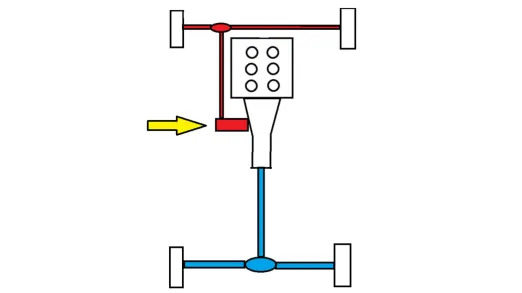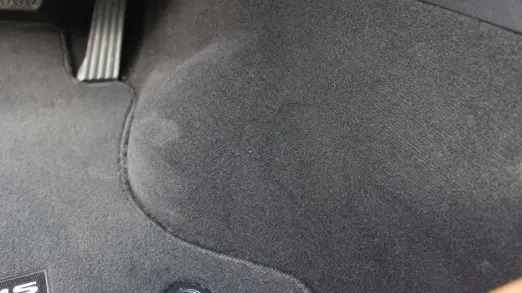After an initial turn a few weeks ago for the 2021 Lexus IS first drive review, the revised luxury sedan has returned to the Autoblog garage for a second look. This middle-of-the-road IS 300 AWD pairs a 260-horsepower V6 with a six-speed automatic transmission and four driven wheels, and frankly it's the least interesting way to spec out the redesigned sedan. While there are cars in this segment designed to get a performance boost from their all-wheel-drive systems even in dry conditions, the IS isn't one of them. Adding insult to injury, you get stuck with a cramped driver-side footwell care of the engineering shenanigans that went into making this system possible.
While we've mentioned this particular compromise before, we rarely touch on the reasons why it exists in the first place. The fundamentals are fairly obvious; the standard IS utilizes a longitudinal, rear-wheel-drive powertrain. As is typical with this configuration, the transmission sits in a tunnel beneath the center console. This arrangement works just fine, provided you don't need to power the front wheels.
To do so in a traditional car like the IS requires a literal end-around maneuver involving the engine and transmission, which we've diagrammed for you below care of MSPaint. This is a bit simplified for the sake of this write-up, and it should be noted that this is not the only way to implement AWD in an inherently RWD platform, but it illustrates how the power for the front axle (red) and rear axle (blue) flows from the transmission to the drive wheels.


To get juice flowing to the front axle, Lexus had to add a parallel output shaft, exiting the transmission from the front with enough clearance for the bell housing and engine, which sits between the transmission and the front differential. This requires quite a bit of lateral reach, meaning the housing has to extend much farther out than usual to accommodate it (yellow arrow). As a result, the all-wheel-drive transmission looks a lot like a sci-fi gun with a chunky drum magazine hanging off the side of it. The hump (above right) in the footwell is there to clear this protrusion.
This basic configuration isn't unique to Lexus. In fact, if you look at a BMW xDrive cutaway, it's similar. So, why no "hump" in other cars? There are multiple factors, but to boil it down to what is most relevant, it's a combination of the resulting shape of the Lexus transmission housing and the size of the IS chassis. This compact, narrow car simply has less room to accommodate a big, wide transmission tunnel. Compounding this, the protrusion sits pretty far forward on the transmission, which is why the "hump" is in the footwell. In a BMW, the location of the protrusion would probably be under the driver's seat, where any associated body modifications would be less obvious.
And why the driver's side? Well, in Japan, it's not the driver's side. Given the choice between re-engineering the transmission for global markets or simply finding the best way to skin the compromise, Lexus erred on the side of saving some coin. And we suggest you do the same. If you don't need all-wheel drive in the IS, skip it. Not only do you get more weight, less legroom and no dynamic benefit, you're also paying $2,000 more for the privilege.
There are many reasons to like — love, even — the 2021 Lexus IS; the all-wheel-drive system just isn't one of them. Otherwise, this is an athletic, comfortable car that retains some of the analog feel that so endeared us to compact sport sedans in the first place, and many of us here at Autoblog are hyped to the ceiling about the upcoming IS 500 F Sport Performance model and its accompanying V8. By all means, keep the little Lexus on your shopping list; just skip the AWD.

Sign in to post
Please sign in to leave a comment.
Continue